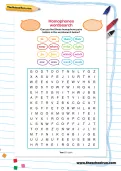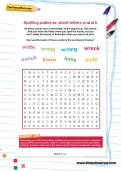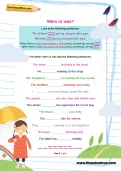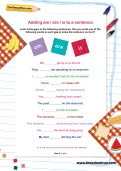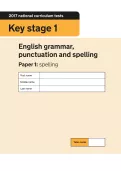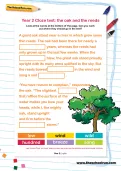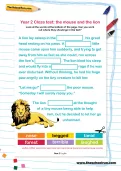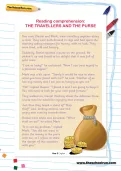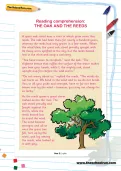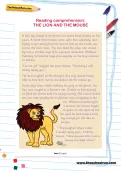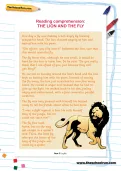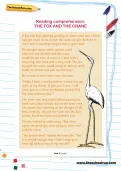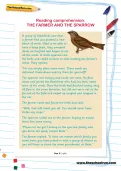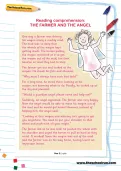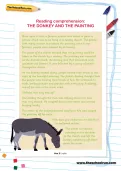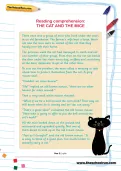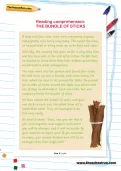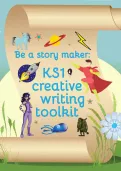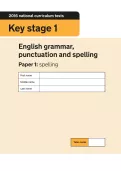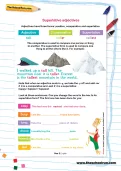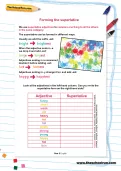When there is more than person or thing doing something, we say were. When there is just one person or thing doing something, we say was. Can you put either were or was into the following sentences?
or
Register to add to your saved resources
Look at the gaps in the following sentences. Can you write one of the following words in each gap to make the sentence correct?
or
Register to add to your saved resources
Already a subscriber? to view this content.
Help your child prepare for the English KS1 SATs, taken at the end of Year 2, with some at-home practice. These complete 2017 Y2 SATs past papers are the official papers from the Department for Education, used in schools.
or
Register to add to your saved resources
Look at the words at the bottom of the page. Can you work out where they should go in the text?
or
Register to add to your saved resources
Already a subscriber? to view this content.
Look at the words at the bottom of the page. Can you work out where they should go in the text?
or
Register to add to your saved resources
Already a subscriber? to view this content.
Look at the words at the bottom of the page. Can you work out where they should go in the text?
or
Register to add to your saved resources
Already a subscriber? to view this content.
Read this short passage and then have a go at answering the questions below.
or
Register to add to your saved resources
Already a subscriber? to view this content.
Read this short passage and then have a go at answering the questions below.
or
Register to add to your saved resources
Read this short passage and then have a go at answering the questions below.
or
Register to add to your saved resources
Already a subscriber? to view this content.
Read this short passage and then have a go at answering the questions below.
or
Register to add to your saved resources
Already a subscriber? to view this content.
Read this short passage and then have a go at answering the questions below.
or
Register to add to your saved resources
Already a subscriber? to view this content.
Read this short passage and then have a go at answering the questions below.
or
Register to add to your saved resources
Already a subscriber? to view this content.
Read this short passage and then have a go at answering the questions below.
or
Register to add to your saved resources
Already a subscriber? to view this content.
Read this short passage and then have a go at answering the questions below.
or
Register to add to your saved resources
Already a subscriber? to view this content.
Read this short passage and then have a go at answering the questions below.
or
Register to add to your saved resources
Already a subscriber? to view this content.
Read this short passage and then have a go at answering the questions below.
or
Register to add to your saved resources
Already a subscriber? to view this content.
Help your child harness their imagination and share their stories in writing with our KS1 creative writing learning pack. Bursting with fill-in prompt sheets and inspiring ideas to get even the most reluctant writer started, it's the perfect way to encourage children aged 5 to 7 to put pen to paper.
or
Register to add to your saved resources
Already a subscriber? to view this content.
Help your child prepare for the English KS1 SATs, taken at the end of Year 2, with some at-home practice. These complete 2016 Y2 SATs past papers are the official papers from the Department for Education, used in schools.
or
Register to add to your saved resources
Adjectives have three forms: positive, comparative and superlative. The comparative is used to compare one person or thing to another. The superlative form is used to compare one thing to all the others like it. Look at these sentences. Can you change the word in the box to its superlative form?
or
Register to add to your saved resources
Already a subscriber? to view this content.
We use superlative adjectives to compare one thing to all the others in the same category. Look at the adjectives in the left-hand column. Can you write the superlative form on the right-hand side?
or
Register to add to your saved resources
Already a subscriber? to view this content.
